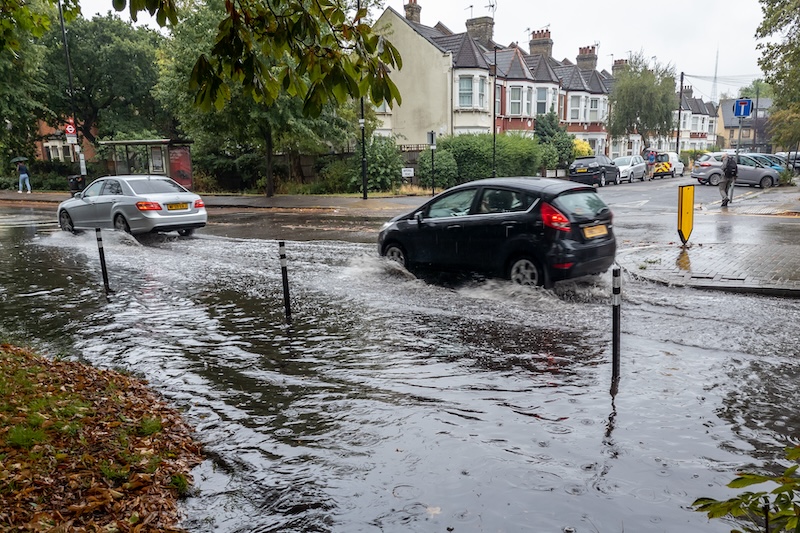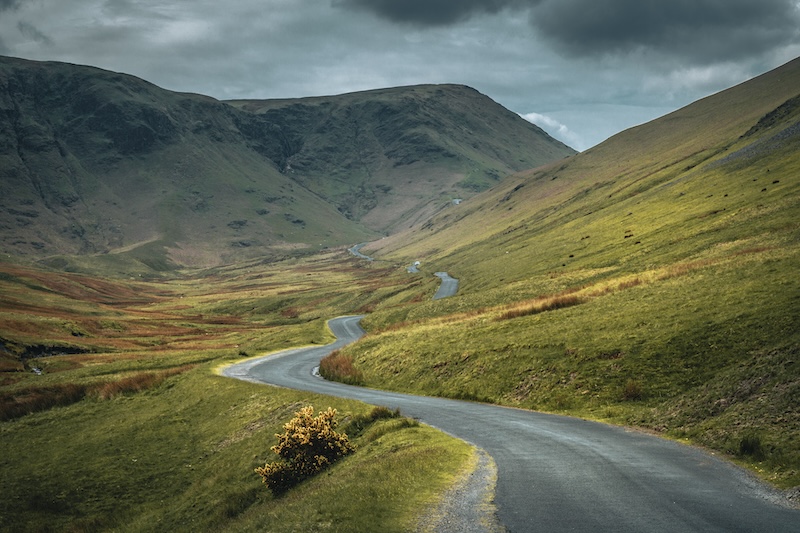How to drive safely in the rain

Drive very slowly when going through a large puddle
British weather can be unpredictable, but one thing that’s always certain is that there’s a lot of rain in autumn. If you want to know more about driving in the rain, check out our top safety tips to help you get where you need to go.
Before you go
Before you set off, there are some things you’ll need to check to make sure your car is fit for driving in the rain.
Windscreen wipers
Check both your front and back wipers. If they’re damaged or worn, they won’t be as effective. If you think your wipers need replacing, it’s best to do so as soon as possible.
Fuel levels
There’s a chance you may get stuck in traffic due to wet weather conditions, so it’s best to have a full tank of fuel before you leave. Idling in traffic will increase your fuel use so it’s best to be on the safe side.
Tyres
Water on the road reduces friction, so check your tyres to make sure they are above the legal tread depth requirement of 1.6 millimetres. If they’re not, you’ll need to get them replaced as soon as possible.
How to drive in the rain
Now you’ve checked your car, here’s how to navigate the roads while it’s raining.
Drive slowly
Stopping distances are increased in the rain due to less friction on the road, so it’s important to drive more slowly if it’s raining, or has rained recently. You should also leave a larger gap between your car and the car in front of you.
Be mindful of spray
Large and/or fast-moving vehicles will kick up a lot of spray from the road, even if it’s stopped raining. This can lower your visibility if you’re too close. If you see a large truck or fast-moving car, make sure you stay far enough behind that you don’t get spray on your windscreen.
Turn your air con on
Some windscreens have built-in heaters, so you may not need to worry about them fogging up when it rains. However, if you don’t have this, there’s a simple way to stop your windscreen from fogging up – keeping your air con on.
Listen for news bulletins
If the rain is particularly heavy, you may want to tune into the news to check for floods and road closures. Accidents are also more likely to happen in wet weather, so you may find yourself needing to plan an alternative route.
What to do if you aquaplane
Aquaplaning is when your tyres lose contact with the road due to a layer of water between them and the road. When this happens, you can’t steer, accelerate or brake.
If you begin to aquaplane, the most important thing is to remain calm.
To take control of your car, here’s what to do:
- Don’t hit the brakes. Instead, gently ease off the accelerator
- Hold the steering wheel straight
- Switch off cruise control if you have it turned on
- When the car begins to regain grip on the road, repeatedly and gently tap the breaks to slow it down.
How to drive safely through large puddles
Did you know driving through puddles incorrectly can damage your car?
Here are some top tips on how to safely make it through large puddles:
- Check the puddle: Even if it means getting out of your car, it’s a good idea to check the size and depth of a puddle. The seals on modern cars are good enough that water won’t find its way into your car. However, if the puddle is deep enough you may find your car floating, leaving you stranded.
- Plan an alternative route: If you think the puddle is too deep, either find a way around it or turn around and find another route.
- Go slowly: If you decide the puddle is shallow enough to drive through, make sure you drive slowly. The best way is to keep your car in a low gear and the engine revs up. This will give you enough momentum to get you through the puddle.
- Pause on the other side: Once you’re through the puddle, it’s important to pause for a moment. This lets the water drain off your car and tyres, which will help you retain grip on the road.
- Be aware of the road: It’s likely the road on the other side of the puddle will be a lot wetter than other areas, so make sure to drive away slowly so you can maintain grip on the road.
For a more in-depth at car checks you can do yourself, see our blog on DIY tips for looking after your car


